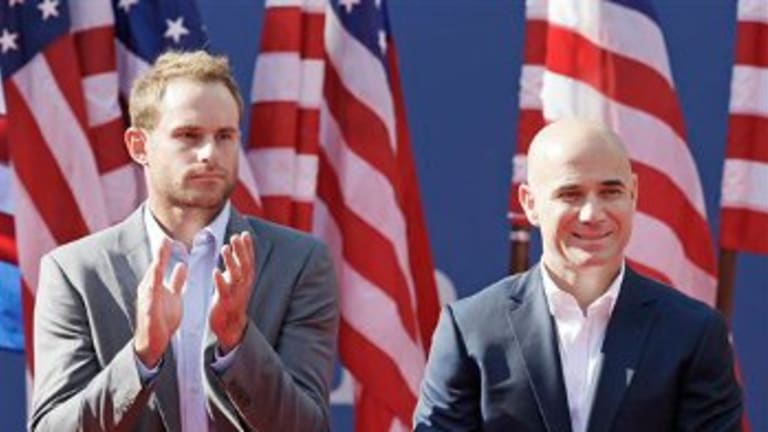Andy Roddick said a lot of things during his brief farewell tour at this year’s U.S. Open. Lost among the wisecracks and reminiscences was a quick but telling statement that he made about the future of American men’s tennis, and his relationship to it.
In the press conference that followed his retirement announcement, Roddick was reminded of the words he had used after Andre Agassi called it quits in 2006, leaving Andy, at 24, as the new standard-bearer for U.S. tennis. Six years later, Roddick found himself in Agassi’s position.
*Q: 2006, Agassi retires. I remember you saying, The training wheels are off for us. Now the training wheels are off for the younger guys. Are you comfortable where the younger guys are moving ahead?
Roddick: I think so. You know, I can’t protect them now, that’s for sure. But I think John [Isner]’s ready. Mardy [Fish] is really good with the younger guys. Ryan [Harrison] will play well once he figures everything out.....I feel pretty good about it all. Even though I won’t be competing against them, I think they all know I’ve never been more than a phone call away from them.*
A ringing endorsement? Not exactly. But it was a hopeful one. The most striking line to me was, “I can’t protect them now, that’s for sure.” It sounded like a joke, but it was true, and it’s one of the keys to the immediate future of the men’s pro game in the States.
Like Agassi, Roddick led by example. As the top-ranked American man and a Top 10 fixture for nearly a decade, he was a model of consistency. As far as Davis Cup went, he was a more active leader than Andre. Roddick led a tight-knit U.S. team for years and clinched innumerable ties. In fact, according to captain Patrick McEnroe, it was Agassi’s disruptive influence that helped lead to one of the most disappointing U.S. Davis Cup losses of the last decade, at home to Croatia in the first round in 2005. Two years later, a team consisting of Roddick, James Blake, Bob and Mike Bryan—with practice partners Mardy Fish, John Isner, Robby Ginepri, and Donald Young—won the country’s first title in 12 years. This was Roddick’s team through and through.
Outside of Davis Cup, Roddick was also friendlier with his compatriots than Agassi was. He lived in the same house with Mardy Fish when they were teenagers, and he was buddies with James Blake. “Buddies” is not the word that comes to mind when thinking about Agassi and his main American rival, Pete Sampras. From Isner’s baseball cap and baggy clothes to Harrison’s fiery (and at times counterproductive) demeanor, Roddick’s stamp is all over this generation of U.S. men. At the Open, Sam Querrey called Andy the “biggest role model” of his career. As of last week, Jack Sock’s Twitter photo shows him as a little kid, sitting and grinning in front of Roddick.
